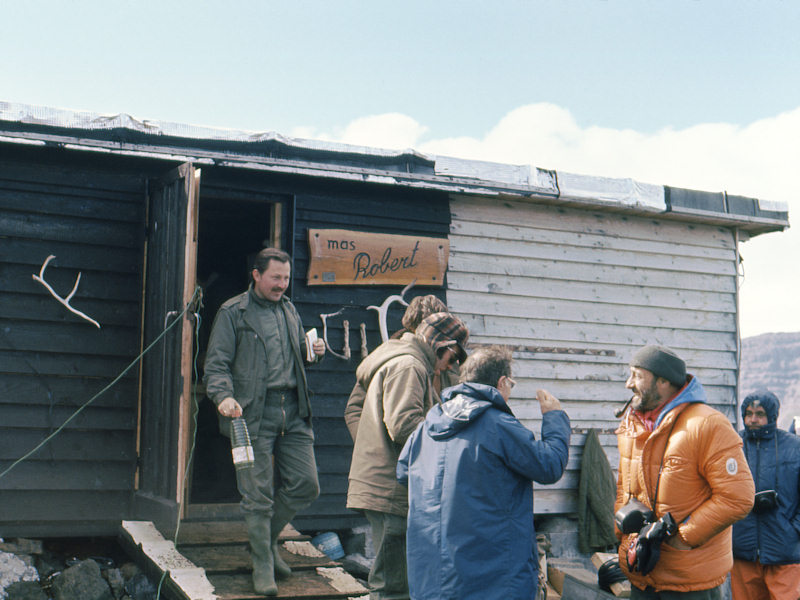
Photo album: "Port Jeanne d'Arc (2)"
Fly over a photo with the mouse to enlarge it
Click on a photo to open it in a new window
The day at Port Jeanne d'Arc proceeds with the exploration of the neighbourhood, then there are the preparatives for the dinner and the night. The next day we take another walk. Later, the barge comes back to fetch us. We sail towards isle Haute. There we collect a few hunters, the barge had landed the previous day. Finally we sail back to Port-aux-Franšais.
 |
Not far from Port Jeanne d'Arc, we sight a beautiful waterfall. Obviously, water doesn't miss in this place! |
 |
We explore the waterfall. |
 |
A skua, pushed by curiosity, has
come near our group: maybe it thought it could find some food? Downwards, in the background, we can make out Port Jeanne d'Arc. |
 |
Later in the afternoon, we help other friends to collect mussels, on the rocks of the beach. We go back to our lodging with an abundant harvest in the caldron carried by two of our friends. |
 |
While the diner is cooking under a member of the CNES team's attentive eye, some Soviets are playing cards. |
 |
As for the French, they are doing a survey of the premises. |
 |
The night falls over Port Jeanne d'Arc. |
 |
How are the bedrooms? Genuine antique furniture, of course, and the rats went away when we arrive. The night will be cold because there is no heating, fortunately we brought our sleeping bags. |
 |
The next day we encounter two gentoo penguins walking in the acaena. |
 |
On the hill, facing Golf of Morbihan stand the crosses of the graveyard of Port Jeanne d'Arc. The four people buried there were members of the Norwegian team of whale hunters. |
 |
The barge threads its way through the islets to arrive to isle Haute. |
 |
High cliffs rise on the other bank of the channel which divides isle Haute from Grande Terre. |
 |
We retrieve a small group of hunters the barge leaved the previous day. We don't land for a long time. As we can see, the name of the cabin on isle Haute is "Mas Robert". |
 |
We sail around isle Haute to fetch, on the other side, a reindeer killed by one of the hunters. |
 |
The hunters carry the reindeer to put it down onto the barge. |
 |
I am not a hunter and seeing this killed animal wrings my heart. But the cook of Port-aux-Franšais' talent will somewhat sooth my sadness when I'll find it in my plate at lunch. |
 |
On the way back, dolphins are following the barge. |
.
.
.
.
.
.
.